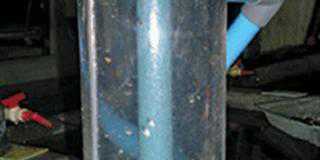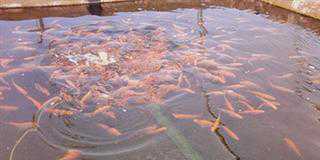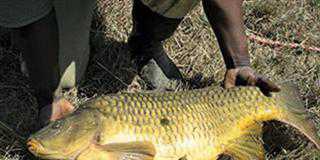
A frequent request that I receive is to “please send a few breeding pairs of fish so that we can breed our own stock”. This rather humble request suggests that when it comes to fish, very little is apparently known about breeding, inheritance and genetics, let alone the facilities needed to do the job properly. My answer is always a firm ‘no’. The scientific laws governing the genetics of animals are universal, and fish are no different from cows, chickens or people.
If you breed two genetically closely-related individuals of the same species, you automatically lose genetic variability. Yes, I admit it’s not quite that simple, but the golden rule is to breed livestock to improve their attributes for aquaculture, and not breed inbred, low quality runts. Government hatcheries please note! The frequent inbreeding of siblings (brother/sister or father/daughter) usually has two results. Certain traits become more fixed (be they good or bad) and the general health of the fish deteriorates.
How then, do hatcheries produce high quality fry? The regrettable answer is that many do not. Choice of broodstock is crucial. I have heard several claims from Gauteng-based breeders that their broodstock is of the “highest quality because it is large-sized”. Size is not necessarily an indicator of quality – the fish may simply be old, as fish grow throughout their lives, or they may have grown up under special circumstances – for example, with ultra-low density or an abundance of food.
Don’t assume
If all the fish in a particular population (thousands of individuals) are fast-growing, with deep body shape and a late onset of maturity, this may be an indicator of high-quality stock for aquaculture. But that can only be ascertained by an intensive scientific examination of their life history. Only once that has been documented can one say that a particular population, or ‘strain’, is of high quality, and even then these attributes may not be as well expressed under aquaculture conditions as in the wild.
Breeding
Tilapia of the genus Oreochromis do not breed in pairs; a male breeds with multiple females. Usually, a male establishes a territory, attracts ripe females and spawns with them. Once the mating is complete, the female leaves to incubate the eggs in her buccal cavity (mouth). After the larvae have developed, they are released to forage for food.
In a hatchery, this natural sequence cannot be allowed to take place. The fry have no place to hide and would be cannibalised by non-breeding adults. Professional hatcheries adopt several procedures to maximise fry production. Egg-incubating females are caught regularly and the developing larvae removed for artificial incubation. Another method is that newly-released fry are collected and reared under specialised conditions.
If sex-reversal is to be done, the developing larvae must still be in the process of absorbing the yolk sac before oral feeding commences, in order for the process to be effective. These activities require specific facilities. Breeding can take place in rectangular tanks or in hapas (net cages), in much larger water containments. In both cases, it is relatively easy to manage the fish. This is why round tanks are not regarded as suitable breeding tanks: the females are virtually impossible to catch.
Nicholas James is an ichthyologist and hatchery owner.













